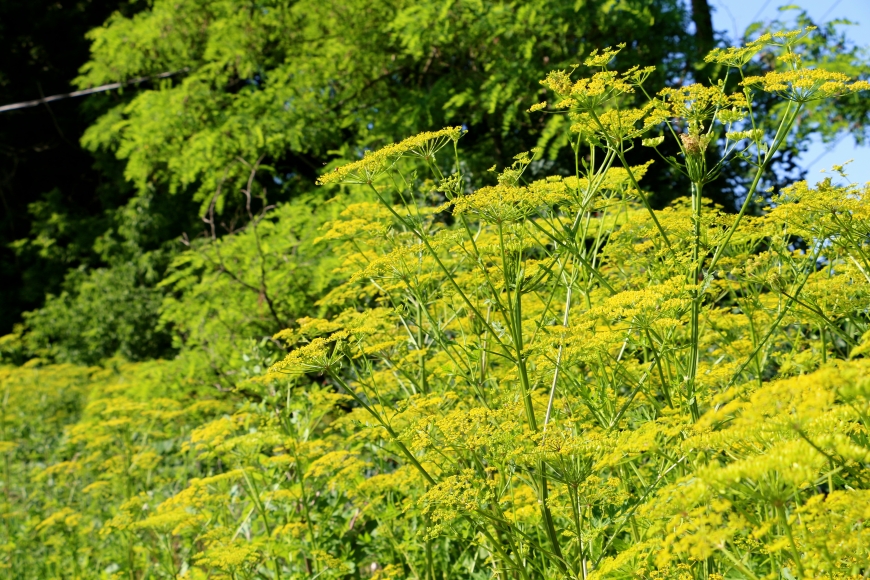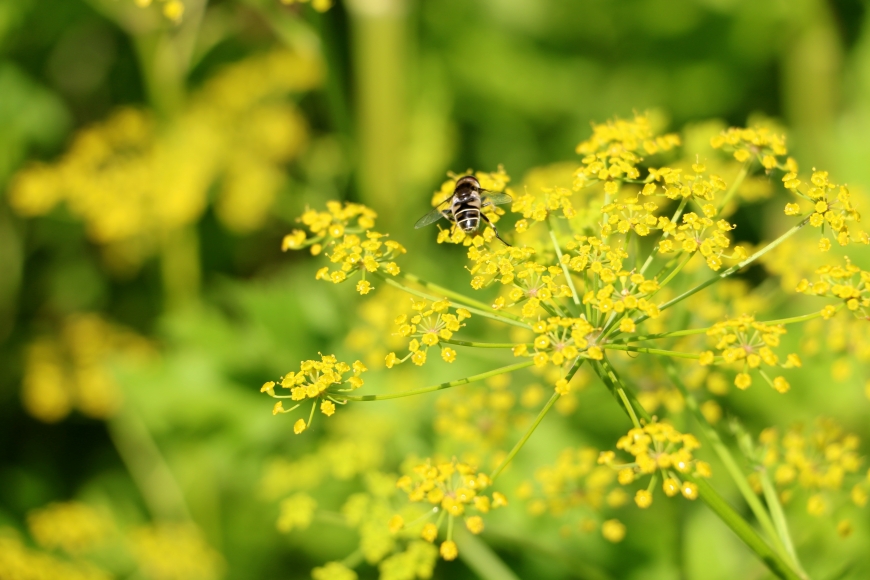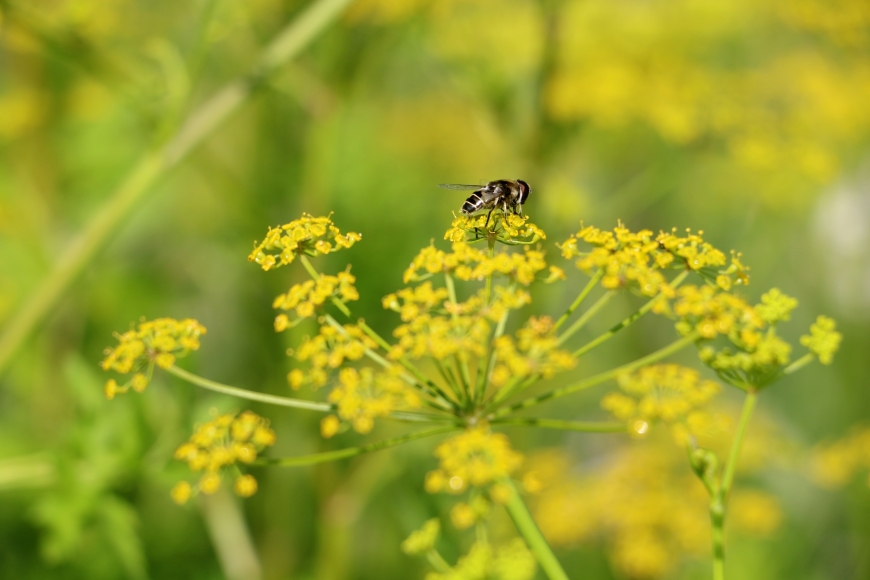





Vengeful Veggies
It’s not unheard of for people to burn vegetables now and then, especially if you’re as easily distracted as I am. I’ll think, the spinach is on low heat, so there’s plenty of time to run out to the garden for chives. Thirty minutes later I’ll be weeding the tomato patch, chiveless, when the smoke alarm indicates the spinach is “done.” Oops.
While it sounds absurd to think a vegetable might burn us, it does happen, and this is peak season for it. The burn is chemical in nature, and the vegetable is wild parsnip, an invasive species whose population has exploded in recent years.
Related to Queen Anne’s lace, wild parsnip grows three to six feet tall, and is topped by yellow-green “umbrellas” of flowers which bloom any time from late June through July. Wild parsnip can be found in vacant lots as well as in yards and gardens. But because it’s so effectively spread by mowing equipment, mile after mile of it can be seen along northern New York State roadsides.
The root of wild parsnip is in fact edible, same as the parsnips we grow in our gardens. However, the sap contained in its leaves and stems, like the sap of of giant hogweed, is phytophototoxic. The only good thing about this word is that it may win you a Scrabble game. It means wild parsnip sap on your skin reacts with sunlight to cause severe burns. And by severe I mean burns that take months, sometimes years, to heal. The sap can even cause blindness if it gets in your eyes.
It’s a small consolation, but you won’t get burned by merely brushing up against this plant, and once it is dry it poses no threat, unlike the case with poison ivy. All the same, it’s probably a good idea to wear gloves and long sleeves when handling wild parsnip.
As everyone knows, when facing a zombie apocalypse, you grab a shovel and aim for their heads. Shovels are also useful in battling the parsnip-ocalypse we now face, except you aim for their feet. Wild parsnips have taproots which are very hard to pull out, but they are easily cut with a shovel. You don't have to get the whole root; just dig as deep as you can to sever the taproot, pry the plant up and it will die. You don’t even have to touch the thing.
If you’re hopelessly outnumbered by wild parsnips, at least mow them to prevent them from making seeds while you muster a posse of shovel-wielding townsfolk (pitchforks and torches are optional) to help you. But do wear protective clothing and safety glasses when mowing wild parsnip, and unless you have a Level-A Hazmat suit, do not use a string trimmer on it.
Glyphosate, the active ingredient in herbicides like Roundup, works on wild parsnip. Herbicide is most effective when used on first-year plants, called rosettes, which are the ones without a flower stalk. The best time to spray is in late summer or early fall. Treating early in the season may kill the top, but often the root will live to send up another flower spike.
I distinctly remember having scorched some parsnips years ago, so I hope none of this is some kind of revenge. Please try not to burn any more vegetables, lest they all become vengeful.
July 10-16 is National Invasive Species Awareness Week. For more information on wild parsnip, giant hogweed, and other invasive species, contact your local Cornell Cooperative Extension office.

